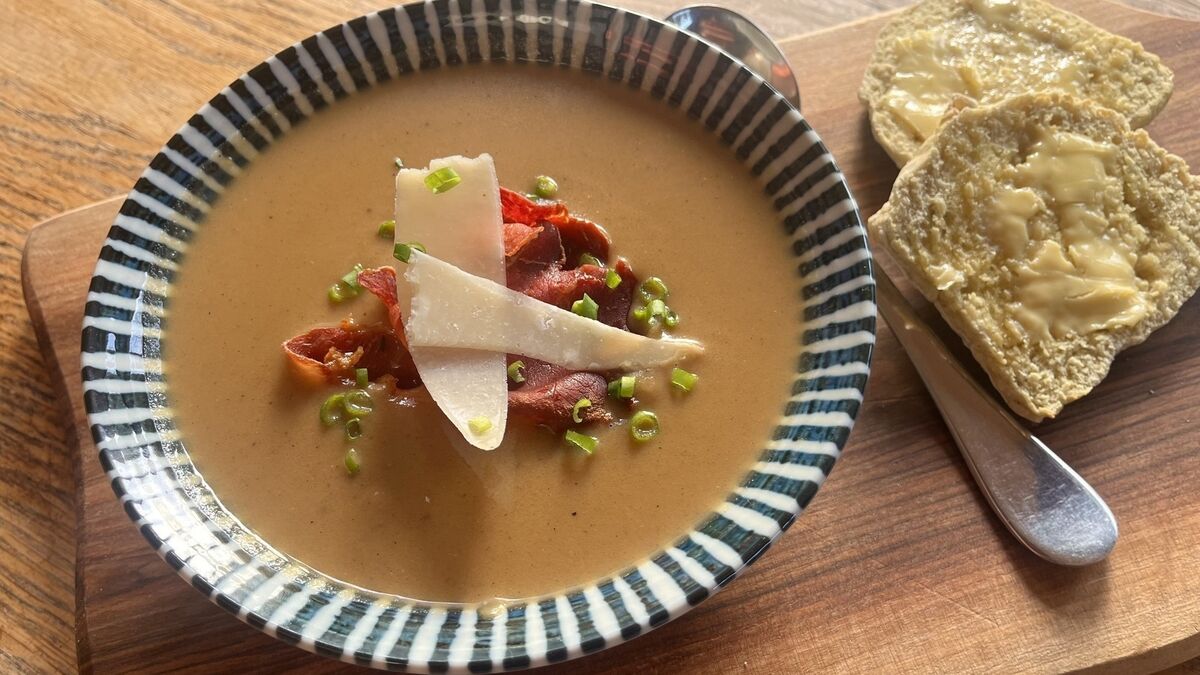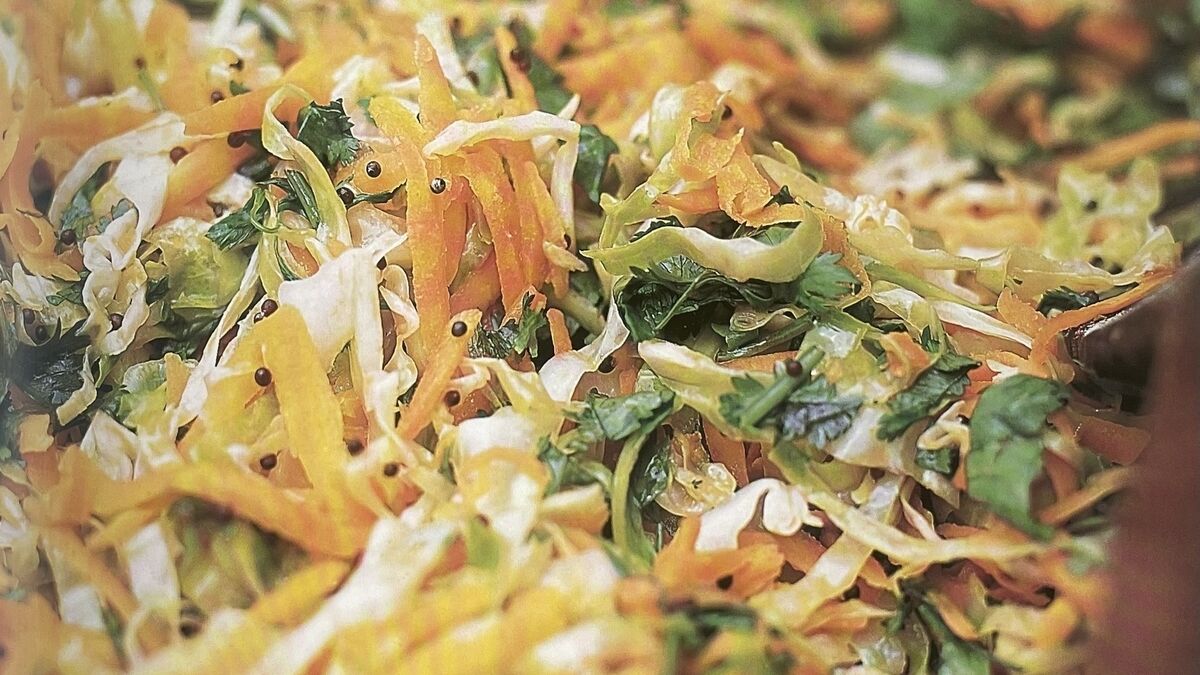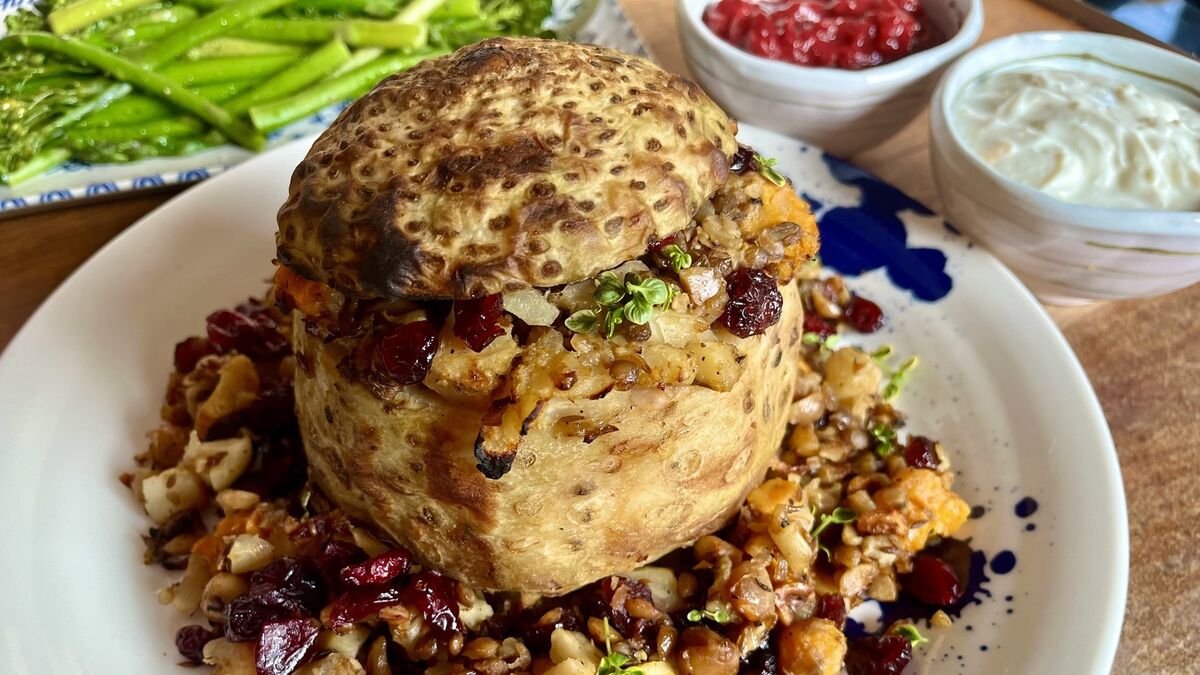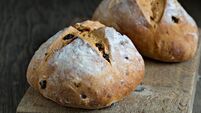Midweek Meals: Get to the root of good food with these 5 winter veg recipes

Pic: iStock
Colm O'Gorman's spiced roast turnip soup with freshly baked soda farls
A good soup and some freshly baked bread is perfection

Servings
4Preparation Time
15 minsCooking Time
40 minsTotal Time
55 minsCourse
StarterIngredients
Soup
1 turnip, approx. 600-700g in weight.
1tsp sweet paprika
40g butter
2 tbsp olive oil
¼ tsp fresh ground nutmeg
1tbsp soft brown sugar
1 tsp flaky sea salt
Fresh ground black pepper
1 medium onion
2-3cm ginger
1 medium potato
1litre chicken or vegetable stock
Soda Farls
400g plain white flour
1 tsp baking soda
Pinch of salt
400ml of buttermilk
1tbsp olive oil
Method
Preheat your oven to 180 Celsius. Peel and chop the turnip into 3cm chunks; you need about 500g of peeled and chopped turnip for this recipe. Peel and finely chop the ginger. Heat a roasting tin on the hob and add the butter and rapeseed oil. When the butter begins to foam, add the paprika and the ground nutmeg. Reduce the heat to low, stir in the spices and let them sizzle for a minute. Keep an eye on the pan and stir as needed to prevent the spices from burning.
Next, add the chopped turnip, the sugar, ginger, salt, and a good grind of black pepper. Stir over a medium heat to coat the turnip and melt the sugar, and then pop the roasting tin in your preheated oven. Roast for forty minutes, giving the turnip a stir hallway through.
Peel and slice the onion. Peel and cut the potato into eighths. Heat a little olive in a large saucepan and add the onion. Cook until it is soft and translucent, four to five minutes will do it, then add the potato and the stock. Bring the pot to the boil, before reducing to a simmer. Cover the pot and let it simmer away until the potato is cooked through and soft, about ten minutes will do it.
Time now to make the Soda Farls. Combine the flour, salt, and baking soda in a large bowl. Make a well in the middle, add the buttermilk and the olive oil. Use a big spoon to mix it into a soft dough. This will be a wet dough, so do not panic and add more flour, it is meant to be this soft.
Turn the dough out into a floured surface, sprinkle with more flour & shape it gently into a rough square, about 2 cm thick. Use a long knife to cut it into quarters, then eighths. As the dough is soft, flour the blade of the knife before you cut to stop it from sticking.
Heat a heavy non-stick griddle pan over a high heat.
Test the pan is hot enough by sprinkling a little flour in the pan. It if browns quickly, it is hot enough. Reduce the heat to medium and pop on the Soda Farls. Cook for about six minutes until they are lightly browned on one side. Turn them over and cook for another six minutes before removing them from them pan onto a wire rack. If your pan is not big enough, you may have to cook the farls in two batches.
The turnip should be perfectly roasted and ready to come out of the oven now. Check it, you want it cooked through and soft; it if needs another five minutes, pop it back in.
Add the cooked turnip to the potato & stock. Use a stick blender to whizz it to a smooth soup. If it is too thick for your taste, add more stock, or a little milk. Warm it through gently and season to taste.
Crisp a few slices of Parma or serrano ham under the grill and use a vegetable peeler to shave some thin strips from a block of parmesan cheese.
Ladle the soup into warm bowls. Cut open and butter the farls. Be generous with the butter, and let it melt into the warm farls. Finish each bowl with some of the crisped ham and parmesan shavings. Serve immediately.
Carrot, Parsnip & Cabbage with Mustard Seed
Try this Keralan cabbage recipe, deliciously perked up with a little chilli spice and lots of freshly chopped parsley.

Servings
6Preparation Time
5 minsCooking Time
10 minsTotal Time
15 minsCourse
SideIngredients
3 tbsp sunflower oil
1 tbsp black mustard seeds
1 chilli, seeded and chopped
225g carrots, coarsely grated
225g parsnip, coarsely grated
225g cabbage, finely shredded against the grain
2 tbsp freshly chopped parsley
2 tbsp freshly chopped mint
Salt, freshly ground pepper and sugar
Freshly squeezed lemon juice, to taste
Method
Heat the oil in a sauté pan and add the mustard seeds. They will start to pop almost instantly. Add the chopped chilli and stir and cook for a minute or so. Add the carrots, parsnips and cabbage.
Toss over a medium heat for 2 or 3 minutes, then add the parsley and mint and toss again. Season with salt, freshly ground pepper and a little sugar. Add the lemon juice, taste and correct seasoning.
Serve immediately.
Roast Stuffed Celeriac with Horseradish Cream
Use soy yogurt if you want to go fully vegan. If you happen to have some cranberry sauce, serve that on the side as well.

Servings
4Preparation Time
30 minsCooking Time
2 hours 0 minsTotal Time
2 hours 30 minsCourse
MainIngredients
Roast Celeriac
1 large celeriac
3 tbsp extra virgin olive oil
Flaky sea salt
1 tsp cumin seed
1 onion
3 cloves garlic
½ tsp ground nutmeg
150g sweet potato
75g roasted hazelnuts
150g tinned cooked green lentils
75g dried cranberries
A few sprigs of fresh thyme
Horseradish cream
250g Greek yoghurt
2-3 tbsp horseradish sauce
1 tsp honey
½ tsp flaky sea salt
Juice of half a lemon
Method
Cut away the roots from the end of the celeriac and scrub the skin clean under running cold water. Dry it off with some kitchen towel and trim the bottom so that it can stand on its end. Preheat your oven to 180 Celsius for a fan oven, or 200 Celsius for a conventional oven.
Stand the celeriac in the centre of a large piece of foil and rub it all over with one tablespoon of olive oil. Sprinkle over a little flaky sea salt and wrap the celeriac in the foil, closing the top over to seal it in. Roast in the oven for one hour.
Peel and cut the sweet potato into 1cm chunks. Bring a pan of water to the boil and cook the sweet potato until it is tender, about eight minutes will do it. Drain into a colander and set aside.
Peel and finely chop the onion. Peel and mince the cloves of garlic. Roughly chop the roasted hazelnuts. Drain the tin of cooked lentils and weigh out 150g.
Heat a heavy based non-stick pan over a high heat. Add two tablespoons of olive oil and reduce the heat to medium. Add the onion and fry that for three to four minutes until it softens. Add the cumin seed, the garlic and the nutmeg and fry for another two minutes, stirring all the time. Next, stir in the cooked sweet potato, the hazelnuts, lentils, and the dried cranberries. Cook for a few minutes, then remove the pan from the heat and set aside for now.
When the celeriac has had one hour in the oven, remove it from roasting tray. Cut off the top to give you a lid about 3-4cm think. Next, use a spoon or an ice cream scoop to scoop out the celeriac flesh, leaving a 1-2cm wall and being careful not to break through the skin, and leaving at least a 1cm thick base. Roughly chop the scooped-out flesh and add that to the pan of stuffing. Pick the leaves from a few sprigs of fresh thyme and stir that in as well. Taste and season as required.
Put the hollowed-out celeriac back in the foil and spoon in the stuffing. You will have more than you need, so just pile it on the top and allow the extra stuffing to fall around the sides. Op the lid back on the celeriac and seal it in the foil once again. Pop it back in the oven to roast for one more hour. When it has just fifteen minutes left to go, unwrap the foil to allow the celeriac skin to become golden.
Put the ingredients for the horseradish cream in a bowl and whisk to combine. I like my horseradish cream to have a bit of a kick, but you can adjust to your own taste. If you want it a little milder, add the horseradish gradually, tasting as you go until you get it just perfect. You can also add a little more salt or honey if you wish.
Serve the celeriac on a warm platter, with the extra stuffing around the edges and the horseradish cream, and some cranberry sauce if you have any, on the side. Serve with crispy roast potatoes and delicious green vegetables such as tender stem broccoli for a Sunday Roast to remember.
Mushroom risotto
Everyone needs to be able to whip up a risotto, comfort food at its best and a base for so many good things, from exotic mushrooms, crispy pork lardons or kale to foraged nettles

Servings
6Preparation Time
5 minsCooking Time
25 minsTotal Time
30 minsCourse
MainCuisine
ItalianIngredients
1 – 1.3 litres (1 ¾ – 2 ¼ pints) chicken or vegetable stock
50g (2oz) butter
2 tbsp extra virgin olive oil
1 onion, finely chopped
400g (14oz) risotto rice, such as Arborio, Carnaroli, or Vialone Nano
50g (2oz) freshly grated Parmesan cheese or a mixture of Parmesan and Pecorino
sea salt
225–350g (8–12oz) a selection of sliced and sautéed mushrooms (lion’s mane, chestnut, oyster, porcini, chanterelles)
Method
First, bring the stock to the boil, reduce the heat and keep it at a gentle simmer. Melt half the butter in a heavy-bottomed saucepan with the oil, add the onion, cover and sweat over a gentle heat for 4–5 minutes until soft but not coloured.
Add the rice and stir until well coated. Cook for a minute or so and then add 150ml (5fl oz) of the simmering stock, stir continuously, and as soon as the liquid is absorbed add another 150ml (5fl oz) of stock. Continue to cook, stirring constantly. The heat should be brisk, but on the other hand, if it’s too hot the rice will be soft outside but still chewy inside. If it’s too slow, the rice will be gluey. It’s difficult to know which is worse, so the trick is to regulate the heat so that the rice bubbles continuously.
The risotto should take 25–30 minutes to cook.
After about 20 minutes, add the stock about four tablespoons at a time. I use a small ladle. Watch it very carefully from there on. The risotto is done when the rice is cooked but is still ever so slightly al dente. It should be soft and creamy and quite loose, rather than thick. The moment you are happy with the texture, add in the well-seasoned hot sautéed mushrooms, stir in the remaining butter and Parmesan, taste and add more salt if necessary. Serve immediately on hot plates.
Alternatively , you can pre-cook the rice for finishing later. After about 10 minutes of cooking, taste a grain or two between your teeth. It should be firm, slightly gritty, definitely undercooked but not completely raw. Remove the risotto from the saucepan and spread it out on a flat dish to cool as quickly as possible. The rice can be reheated later with some of the remaining stock and the cooking and finishing of the risotto can be completed. Risotto does not benefit from hanging around – the texture should be really soft and flowing.





